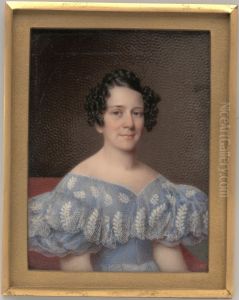Alvan Clark Paintings
Alvan Clark, born on March 8, 1804, in Ashfield, Massachusetts, is renowned for his extraordinary contributions to the fields of telescope making and astronomy, despite beginning his career in a vastly different domain. Initially, Clark's artistic aspirations led him to become a portrait painter. Throughout the 1830s, he pursued this profession, traveling and working in various locations, including the southern United States. However, his legacy would not be in the brushstrokes of portraiture but in the precision of optical lenses.
In the mid-19th century, Clark transitioned from art to the science of optics, a move driven by both passion and practicality. His interest in astronomy and lens making, initially a hobby, became a professional pursuit as he recognized the growing demand for high-quality telescopic lenses. Alongside his sons, George Bassett Clark and Alvan Graham Clark, he founded the firm Alvan Clark & Sons in Cambridge, Massachusetts. This establishment quickly rose to prominence for its exceptional craftsmanship in telescope lenses, setting new standards in the field.
The Clarks' telescopes were not merely instruments of science; they were marvels of the era, contributing significantly to astronomical discoveries. One of their most notable achievements was the crafting of the lens for the Dearborn Observatory's telescope in 1862, which, at the time, was the largest refracting telescope lens ever made. This feat was later eclipsed by their own work, as they went on to create even larger and more powerful lenses, including those for the U.S. Naval Observatory and the Lick Observatory.
Alvan Clark's legacy is marked by a pivotal moment in 1862, when his son, Alvan Graham Clark, discovered the dim companion star Sirius B, or the Pup, using one of their telescopes. This discovery not only demonstrated the superior quality of their lenses but also had profound implications for the study of stellar masses and the nature of white dwarf stars. Alvan Clark's transition from artist to artisan to a pivotal figure in the advancement of astronomy highlights a remarkable journey of intellectual curiosity and technical innovation.
Clark passed away on August 19, 1887, in Cambridge, Massachusetts, leaving behind a legacy that bridged the worlds of art and science. Alvan Clark & Sons continued to dominate the telescope-making industry well into the 20th century, with their instruments playing key roles in the development of modern astronomy. Alvan Clark's life story is a testament to the impact that passion, combined with perseverance and adaptability, can have on the world.




